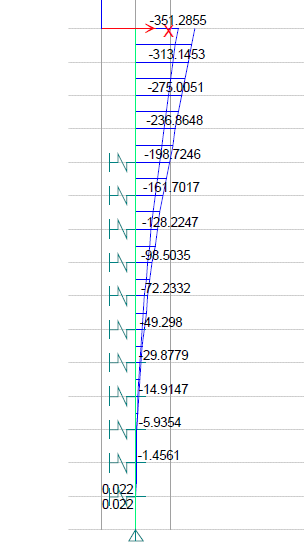The design of the pile foundation is based on greater uncertainties caused by the lack of information about the nature of the subsoil and rock.
Although we know the nature of the soil when performing well tests, the accuracy of these tests and the level of testing performed are often not sufficient to interpret well test data.
For example, it can be seen that soil classification in borehole investigations is predominantly based on visual observations during the on-site investigation.
This is not the correct method of soil classification. We need to carry out the necessary tests in the laboratory to classify the soil.
Likewise, there are key factors that we need to take into account when designing Pile Foundations .
Let's talk about it.
Axial reaction of piles
In the event of an earthquake, foundations are subject to two axial reactions. However, most designers focus on the lateral response of the pile.
The axial response of the piles is largely neglected, as is the case in the design of the superstructure.
- Lateral movement and settlement of the ground can be caused by an earthquake . Soil settlement can lead to negative friction on the surface of the piles if the soil settlement is greater than the pile settlement.
- The creation of excessive pore water pressure due to an earthquake results in a significant reduction in the effective tension at hei . This reduces the effective lateral stress between the soil and the pile. This leads to a reduction in friction between the pile and the ground. If ground surface friction is taken into account in the geotechnical bearing capacity of the pile, this will result in a reduction in the safety factor. This reduction is temporary and with the dissipation of pore water pressure the pile can largely restore its bearing capacity.
Pile buckling
Pile buckling can occur when driven into very soft soils where sufficient lateral pressure cannot be applied to the pile to limit lateral deformations.
Furthermore, the liquefaction effect that occurs during an earthquake reduces the lateral stiffness of the soil and can cause piles to buckle.
The following limits are given in the book Tall Building Foundation Design by Harry G. Poulos
- Limit the ratio of subsequent load to critical buckling load to approximately 1/3 to ensure protection against buckling .
- Limit the slenderness ratio (SR) of the pile. SR <50 could prevent buckling stability in the buckling zone . SR = L/(I/A)0.5, where L is the effective length of the pile within the liquefiable layer, I is the minimum moment area and A is the cross-sectional area of the pile.
Selection of the type of pile foundation
The selection of the type of pile foundation must be done very carefully in the initial stages of the project. The appropriate type of pile foundation should be selected based on the load on the superstructure, its behavior, soil conditions, etc.
For example, if we decide to use driven piles or cast-in-place concrete piles, we must assess the condition of the soil. When we use driven piles, there must be a hard layer of soil for the piles to sit on.
The situation is similar in the construction of bored piles: there must be rock that provides sufficient final support. However, if the rock is not close to the ground and is not within reach, bored piles are also constructed as friction piles with sufficient end support.
Incorrect assessment of pile load capacity
The bearing capacity of the pile depends on the geotechnical and structural bearing capacity.
In general, the geotechnical capacity of the pile is the crucial factor to be considered in the project.
If care is not taken, negative pile skin friction can usually be avoided. Negative ground surface friction has a significant impact on geotechnical capacity.
Furthermore, the surface friction of the soil must also be taken into consideration very carefully. Surface friction values can be verified through necessary tests before applying the load, as the capacity developed is uncertain.
Likewise, the battery's charging capacity must be estimated very carefully.4
Effects of lateral loads that must be taken into account when sizing piles
Piles are generally designed for the axial loads imposed by the superstructure.
We analyze the superstructure as a screw supported at the level of the base beam/block plate. This leads to an improvement in the rigidity of the superstructure and reduces the transfer of bending moment to the foundations.
Additionally, if we design the floor joists to rest on a knife edge (pile supports are considered bolt supports), moment transfer to the pile foundations is further reduced.
However, the bending moment exerted on the pile due to the lateral loads acting from the superstructure on the foundation system cannot be avoided.


The bending moment in the pile is greatest at the tip of the pile and decreases towards the tip of the pile. The lateral force exerted by the soil reduces the deflection of the pile and reduces the bending moment.
Therefore, we must structurally size the pile for the bending moments caused by the lateral load, taking into account the effective height of the pile.

